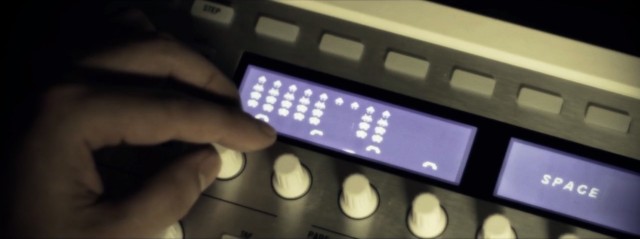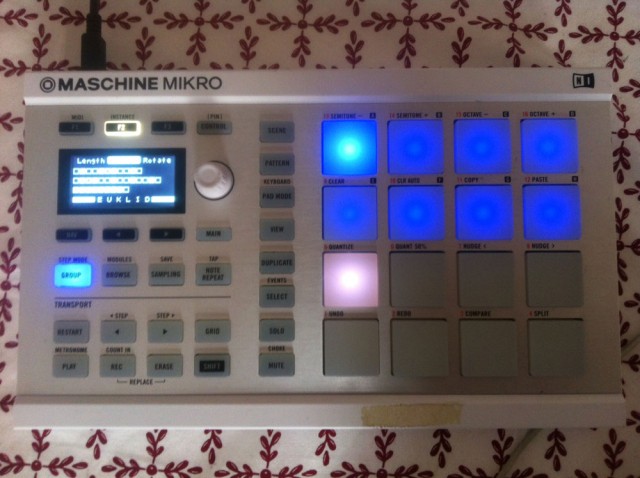shaduzLabs – maschinIO from Mickael Le Goff on Vimeo.
Ever thought you’d play Space Invaders on your Maschine? You might.
It’s rough days for people who like standalone drum machine gear. Native Instruments’ Maschine is great in combination with software, but it turns into a brick when disconnected from a computer. The mighty Akai has followed suit, replacing their vaunted MPC with more accessories for your computer or iPad. This stuff is the dream of marketers: you get all-in-one hardware/software solutions. But when you want to cut the cord from your computer or go beyond the stock functionality, it’s another story.
One hack promises to turn all of that around. And it’s making progress.
The project is called maschinIO. And it’s more than a little ambitious, as you can see in this demo video at top.
Maschine wasn’t engineered to work this way. Via normal operation, its display and pads are all operated by the computer host. Without the computer connected, and without the host driver, it’s a paperweight.
But that same host communication opened up a window to hacking, and developer Vincenzo Pacella decided to do just that. By listening in on the chatter between hardware and software, he could work out how to essentially speak Maschine language to the drum pad controller. Then, making Maschine operate on its own is a matter of writing a graphics library and using an Arduino to substitute for the USB host. (Yeah, easy. Okay… you might need to be a bit obsessive to embark on such a project, but it’s possible.)
Of course, you’ll want to test the results. And that’s how Space Invaders wound up running on the Maschine hardware, powered by Arduino as USB host but with a Mac or Windows desktop nowhere in sight.
With that proof of concept in mind, a lot became possible – and so maschinIO was born. The dream:
With that, you can make a standalone hardware sequencer based on the Maschine hardware interface. So, for instance, that includes using Arduino for simple host mode support for sequencer operation, and outboard gear for sounds – CV and modular being one option. Another use case would be continuing to use a computer for sound, but transforming the way Maschine works as a controller (in its display and software operation). Once the custom protocol and operation are open, the limits are really what you might do with it.
The original story (with lots of background):
Hacking Maschine – how it all started


That was September. Flash forward to now-ish. Space Invaders may have been a fun demonstration of the display, but it’s not terribly useful musically. Now, you get an ever-popular Euclidean music sequencer, running on Maschine’s hardware and display:
Vincenzo is making good progress, even if “it’s taking waaaaay longer than I expected.” (It’s always the way with these things. Keep the faith, Mickael!)
Compatibility is looking good, too: Linux on top of Mac and Windows communication, plus MK1 (the monochromatic early models) as well as MK2 hardware support.
Those of you who are interested in doing this sort of hack, lots of interesting tidbits in his updated story from Friday:
What happened to maschinIO?
For everyone else, I think you’ll agree this is a tantalizing display of what Maschine might be. And we’ll be waiting with eager anticipation to see when we’ll get our hands on this ourselves. Having Maschine take on a second life away from the computer sounds fine indeed.
shaduzlabs.com
Bonus: more tantalizing graphics tests:
CDM is a home for people who make and play music and motion.
Get news and special deals from us in your inbox weekly:
Opt in to receive news and updates.
You have successfully joined our subscriber list.
Made by Create Digital Media, GmbH in Berlin

